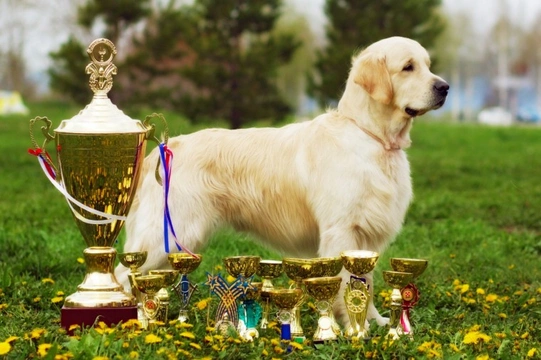
What is the point of formal dog shows?
Large-scale formal dog shows like Crufts and other major Kennel Club affiliated events (as well as the qualifying heats leading up to them) are often highly publicised and very prestigious to compete in, as well as of course to win at.
Many dog lovers enjoy watching dog breed shows either in person or on TV whether or not they have any aspirations to enter their own dog at some point in the future, whilst for others, dog breed shows can seem dull or pointless – or even in some cases, a bad thing, when dogs that appear to be overly exaggerated or even outright unhealthy win awards.
When it comes to answering the question “what is the point of formal dog shows?” most dog lovers would probably agree that it is so that dog owners can find out how their dogs measure up to others, for the prestige of winning an award or potentially, for the prize money (more on that later), but the true or original reasons for why dog breed shows came into being aren’t totally clear to everyone.
In this article we will explain the purpose of formal dog shows and what they are designed to do and achieve in theory, regardless of whether or not they actually achieve this in practice! Read on to learn more.
Identifying the best examples of a specific breed
Formal dog breed shows take place in heats, beginning by comparing dogs of the same breed to each other (in most shows, this is divided into further sections for initial heats based on age and gender) to find the best example of the breed present on the day, as determined by their adherence to their relevant breed standard.
Identifying the best of type
Most dog shows then hold wider breed group classes, which compare dogs of different breeds but from the same umbrella group to each other, to find the dog that is the best example of their own respective breed, as part of the heats process for higher-level qualifications.
Driving breed improvement
Dog show winners should of course be the very best examples of the breed in question judged on the day of the show, and so they serve as ambassadors for their breed as a whole to demonstrate what other dog breeders should aspire to produce, and what puppy buyers should look for in their next purchase.
Show-winning dogs should be aspirational, and incentivise other people to recognise their good traits and see them as desirable, to drive improvement across the breed as a whole by nature of creating or enhancing demand for dogs that are similar to the winners themselves as opposed to other specimens.
Demonstrating the rewarding of positive traits
Show-winning dogs should display all of the best, most positive and desirable traits that can be found in the breed, and dogs showing such traits should be rewarded in the ring – and those that don’t display such traits should be ranked lower in their turn.
By ensuring that positive traits are rewarded with higher places and negative traits are not rewarded, this in turn incentivises breeders to follow the breed standard and work to produce good quality, healthy dogs. However, how well this is applied by show judges in practice is the source of a huge amount of controversy at times.
Dogs that are unfit or unhealthy should of course never win prizes, as this obviously rewards negative traits and penalises positive ones. But when you consider the fact that authority bodies such as the Veterinary Record stated in 2015 that 25% of Crufts winners were overweight – and that dogs with exaggerations that should be penalised seem to be rewarded reliably in the ring within some breeds too – the Kennel Club clearly still has a long way to go when it comes to applying these rules in practice.
Improving breed health
On which note, unhealthy dogs should never be rewarded in the ring, which in turn, is designed to incentivise the breeding of healthy dogs and of course, prevent suffering. However again the application of this rule by show judges is considered by many to be patchy, and a reasonable amount of controversy is stirred up on this subject more or less every year.
Shows should be fun and rewarding for dogs and owners
Dog shows are of course also supposed to be fun and rewarding for dogs and owners, and this is almost always the case, assuming that the dog in question is fit and healthy and handled positively.
Showing also helps dog owners to fine-tune their dogs’ skills, obedience and responses, and enhance their bond with each other.
There isn’t really any money in dog showing!
You might think that winning a big award at a dog show like Crufts would set you up for life, but the financial rewards of dog showing are surprisingly small, even for huge, prestigious events like Crufts – at which the Best in Show winner receives £100. Yes, £100, we didn’t miss out a few zeros – and even the huge cup that they are awarded on the day is not theirs to keep!
Additionally, showing dogs, particularly at high levels, is very expensive, and often, outside of the reach of many would-be competitors seeking to show their dogs regularly.
…But dog show success can be financially profitable in other ways
Whilst there’s not a lot of cash in the prize pot for dog show winners, owning a show winning dog can be profitable in other ways. Sponsorship and promotional deals, stud fees, producing and selling litters and the other associated benefits can all soon add up – but once more, even if you are really successful in the show ring, you’re unlikely to be able to turn this success into a major financial profit.



